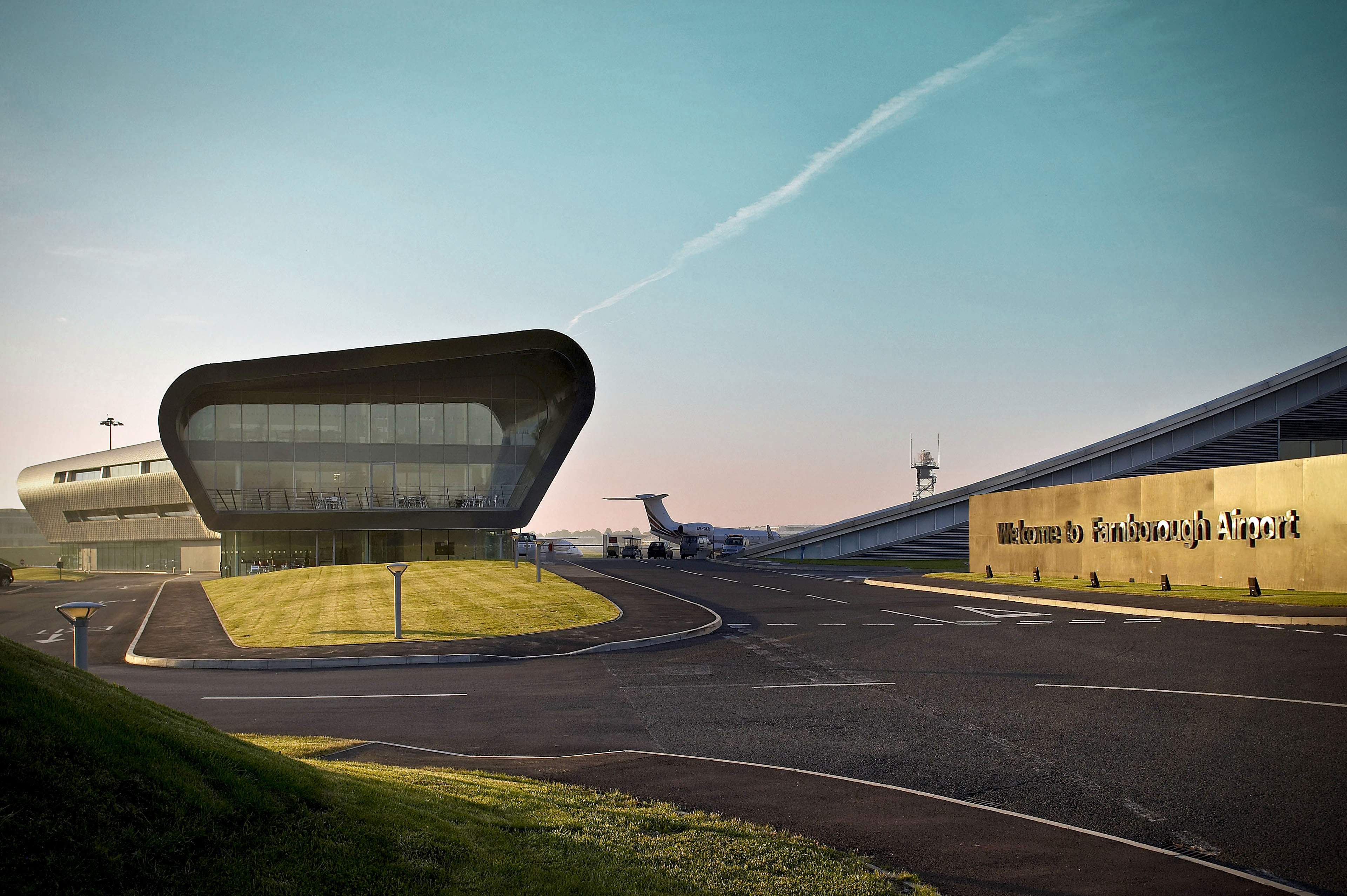
About us
On this page, you can find more about the history of the Airport and the role it plays today, what business aviation is, and what we are doing to operate as sustainably as possible.
Our history
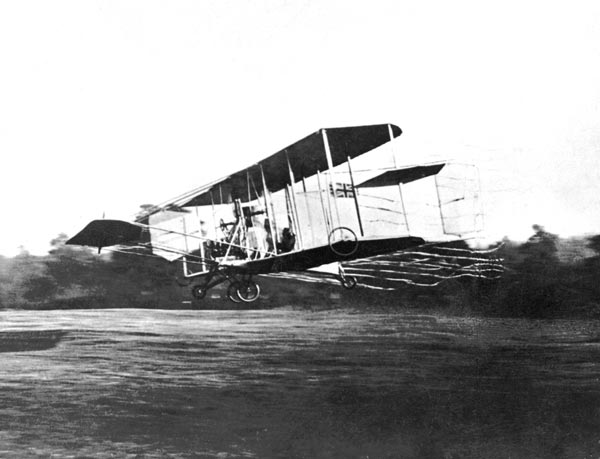
Farnborough and its Airport have a unique place in aviation history.
The airfield was established in 1904 and it was the location of the first UK powered flight in 1908. Ever since, Farnborough has been recognised as the birthplace of British aviation.
Born out of these pioneering beginnings, Farnborough Airport has been one of the most significant contributors to aviation innovation and aeronautical science for over a century.
Owned by the Ministry of Defence during the two World Wars and the Cold War, the Airport was a centre of military and civil aviation research. In 1948 the inaugural Farnborough International Airshow took place. Today the Airshow continues to be the world’s leading aerospace exhibition and trade event, attracting thousands of business organisations and visitors to Farnborough from across the globe.
In 1989, Farnborough Airport handled its first civil aviation operations. This was followed soon after by plans to develop the Airport with a particular focus on business aviation and related activities.
A planning application was subsequently approved in 1999 and this has shaped the nature of the Airport’s operations that exist today.
- 1904 – Airfield established in Farnborough.
- 1908 – Farnborough was the UK’s first airfield in aviation history and home to the country’s first powered flight, which saw Samuel Franklin Cody take off in his British Army Aeroplane No. 1.
- 1908-1991 – Primarily used as a military aviation research base, Farnborough was owned by the British Ministry of Defence (MOD) during the two World Wars and the Cold War.
- 1948 – The inception of the inaugural Farnborough International Airshow.
- 1989 – Farnborough’s first civil aviation operations begin.
- 1991 – MOD announce that the airfield is surplus to military requirements.
- 1994 – Government declares that the airfield should be redeveloped as a business aviation centre.
- 1997 – Private operator wins the competitive process to operate the airfield.
- 1999 – Planning for the redevelopment of the airfield begins.
- 2003 – Civil Aviation Authority licence is granted.
- 2007 – Airfield freehold is acquired and major renovations commence.
- 2009 – Airport masterplan setting out growth proposals to 2019, and indicatively to 2030.
- 2011 – Grant of approval to increase flights from 28,000 a year to 50,000.
- 2012 – Airspace Change Proposal commences.
- 2018 – Airport becomes the first business aviation airport in the world to achieve carbon neutral status.
- 2019 – Airport is acquired under new long-term ownership.
- 2020 – Airspace Change Proposal is implemented.
- 2022 – Construction of the Airport’s third hangar begins – Domus III.
- 2022 – Launch of the Airport’s Net Zero Roadmap.
- 2022 – Airport enters the UK’s Airspace Modernisation Strategy and initiates an Airspace Change.
- 2023 – Farnborough Airport becomes the first UK business aviation airport to achieve Level 4+, the highest level of carbon accreditation.



The role of Farnborough Airport
The role of Farnborough Airport is shaped by our history.
The Airport’s current operation has been shaped by its past. The permissions to develop Farnborough Airport for business aviation came with restrictions on the size of aircraft and the type of flights which were allowed.
These were intended to minimise the environmental impact of the Airport’s operation by ensuring it focussed on serving the business aviation market and did not develop into a traditional commercial passenger airport.
Although not restricted solely to business aviation, the proximity of Farnborough Airport to London has resulted in the Airport becoming one of the most important gateways for business aviation in the UK.
It has consistently been voted the best airport of its kind in Europe, and its iconic architecture and state-of-the-art facilities make it one of the most impressive airports in the world.
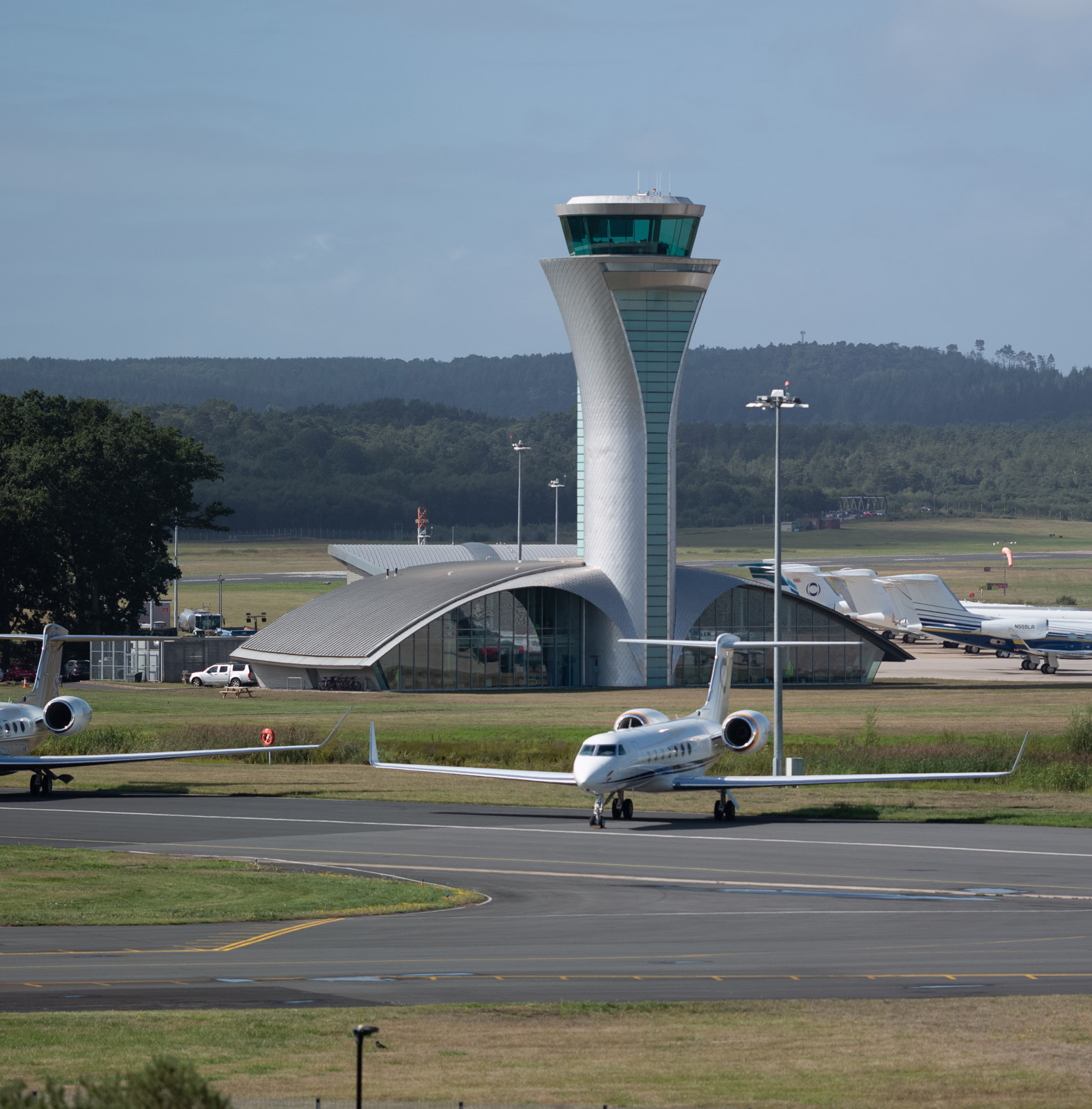
What is business aviation?
High economic consequence, essential in purpose, and time-sensitive in nature. Business aviation serves this market.
The term ‘business aviation’ refers to a subset of the wider business air travel market. Using smaller and lighter aircraft, business aviation serves a market where its users require enhanced levels of connectivity and assurance.
Whilst the majority of the business air travel market is served by scheduled airlines operating between traditional commercial passenger airports, some business travel purposes have very specific requirements.
For example:
- Where direct connections and flight times are not otherwise available on scheduled flights
- Where the flight requires greater certainty on timings and connections
- Where travel flexibility is an essential aspect of the trip
- Where complex travel itineraries need to be accommodated
- Where enhanced levels of security and personal assurance is a priority
These requirements, combined with the relatively high costs of using business aviation, mean that business aviation flights are often of high economic consequence, essential in purpose, and time-sensitive in nature. Business aviation serves this market.
Who are our users?
Business aviation has a diverse customer base, ranging from global companies to small business enterprises, representing commerce and trade from across the economic spectrum.
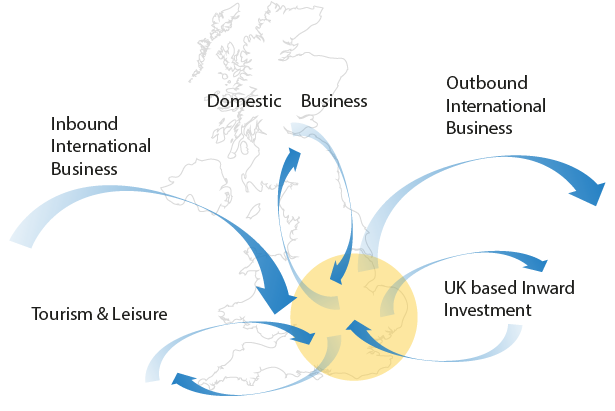
Sustainability
Farnborough Airport has a proud history of leading on sustainability, becoming the first airport of its kind to be Carbon Neutral accredited in 2018.
We want to be a Global Showcase for Airport Sustainability. Our ambitions include becoming a 100% Sustainable Aviation Fuel (SAF) airport before 2030, and we want to be a catalyst for change, not just in our core markets, but within the aviation industry more generally.
Since 2018, Farnborough Airport has been carbon neutral for Scope 1 & 2 emission sources. Recently we were awarded Level 4+, the highest level of carbon accreditation, by the Airport Carbon Accreditation (ACA) scheme. The ACA is the only institutionally endorsed, global carbon management certification programme for airports, independently assessing and recognising the efforts of airports to manage and reduce their carbon emissions.
To achieve carbon neutrality the Airport currently uses REGO backed electricity (Renewable Energy Guarantees of Origin) and offsets residual emissions. We have also committed to being Net Zero for Scope 1 & 2 emissions sources by 2030 or sooner, which will reduce these emissions by over 90%. This means there will be significantly less reliance on carbon offsetting, although residual emissions will still need to be offset consistent with Net Zero protocols.
The aviation industry is working hard to develop new fuel and aircraft technology in response to the global climate challenge. In response to Government targets to achieve Net Zero by 2050, the aviation sector has established its own Net Zero Carbon Road Map, developed by Sustainable Aviation (www.sustainableaviation.co.uk).
As a member of Sustainable Aviation, Farnborough Airport is working with stakeholders from across the industry to help tackle the challenge of ensuring a cleaner, quieter, and smarter future for the aviation industry.
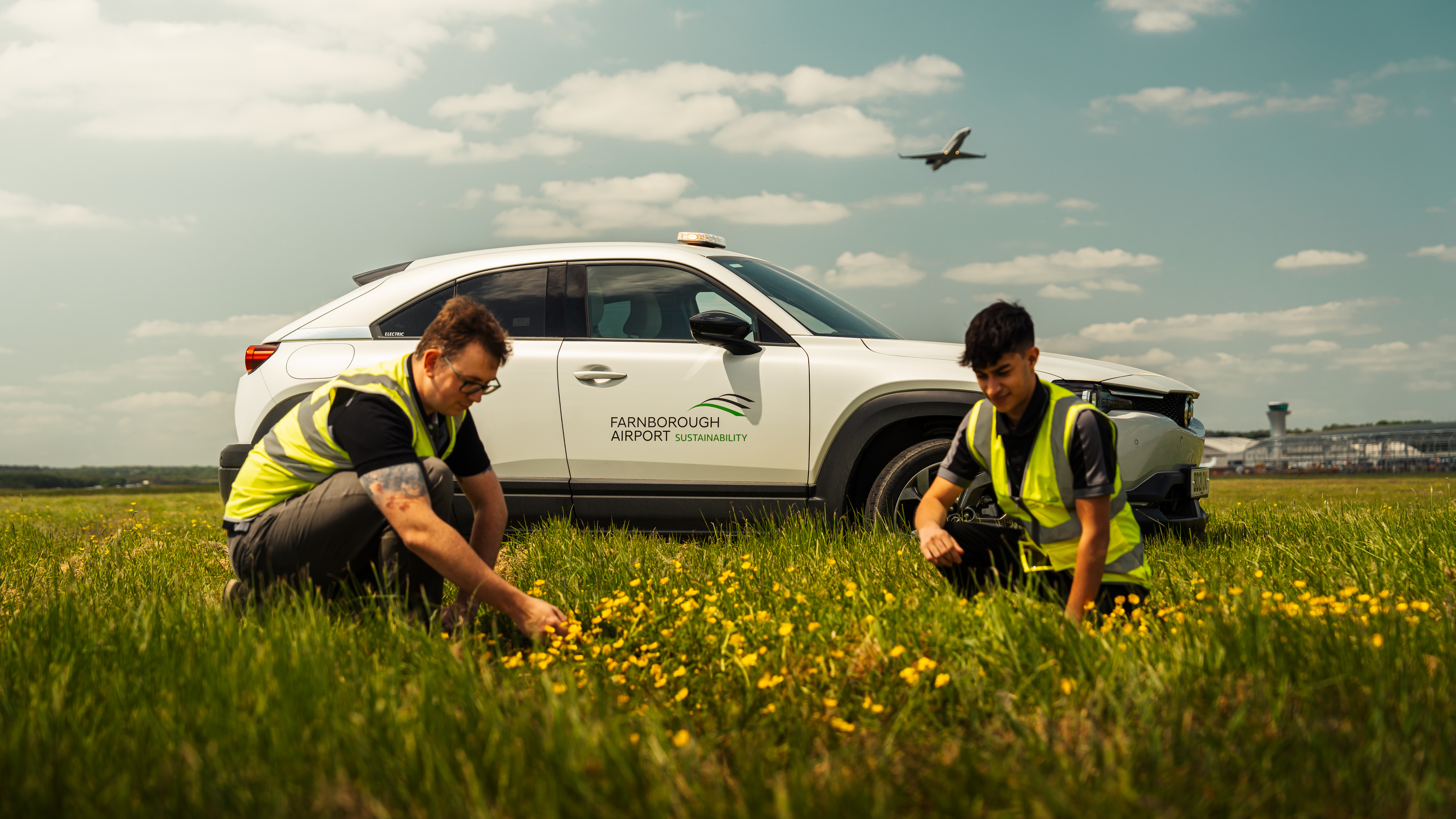
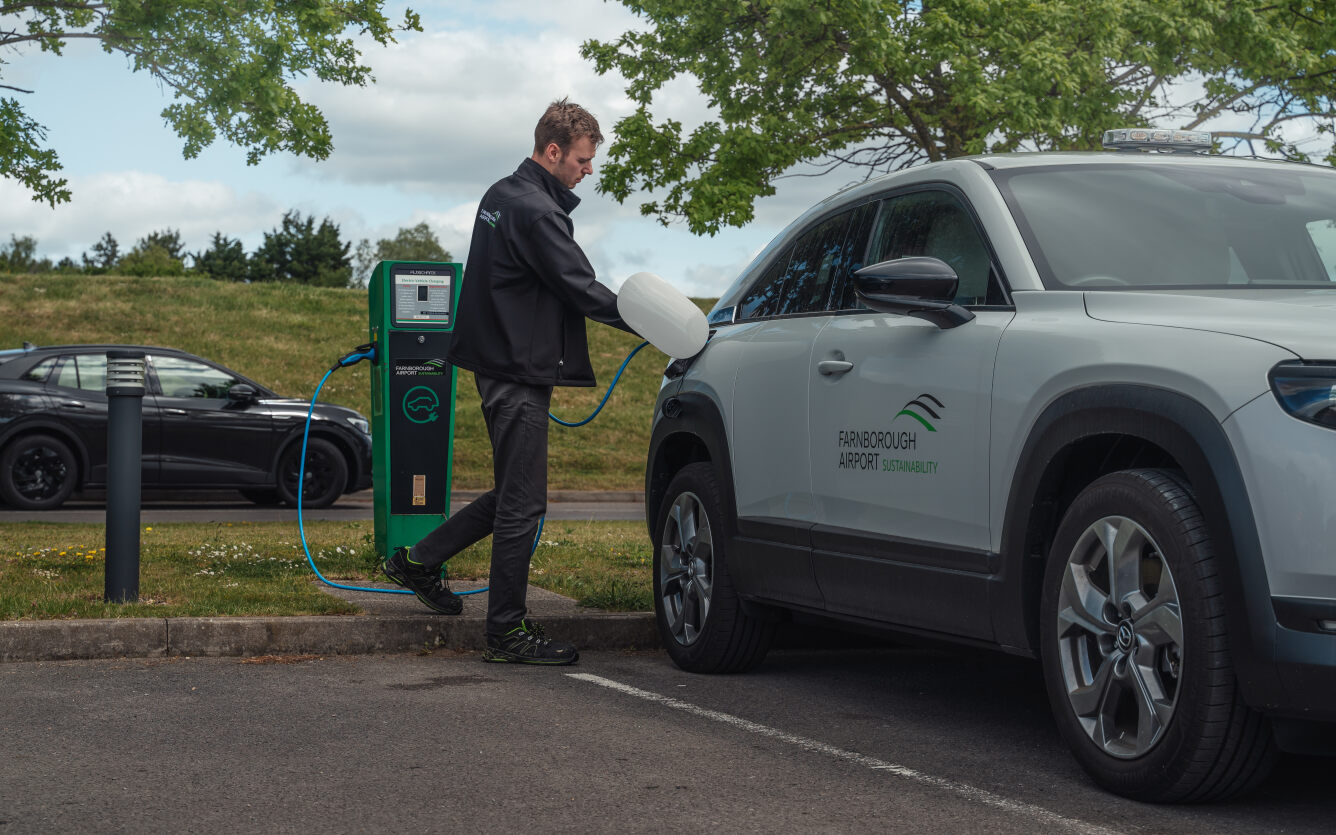
Here are some of the things we are doing to operate as sustainably as possible:
 Level 4+ Carbon Accreditation
Level 4+ Carbon Accreditation Sustainable Aviation Fuel available to customers since 2021
Sustainable Aviation Fuel available to customers since 2021 Monthly air quality monitoring at 13 locations across the Airport site and local communities
Monthly air quality monitoring at 13 locations across the Airport site and local communities  Noise measurements recorded continuously at either end of the runway
Noise measurements recorded continuously at either end of the runway Prohibiting some of the noisiest aircraft (requiring aircraft to be at least ICAO Chapter 4 and above)
Prohibiting some of the noisiest aircraft (requiring aircraft to be at least ICAO Chapter 4 and above)  Zero waste to landfill approach
Zero waste to landfill approach Protection of flora and fauna on and around the Airport
Protection of flora and fauna on and around the Airport
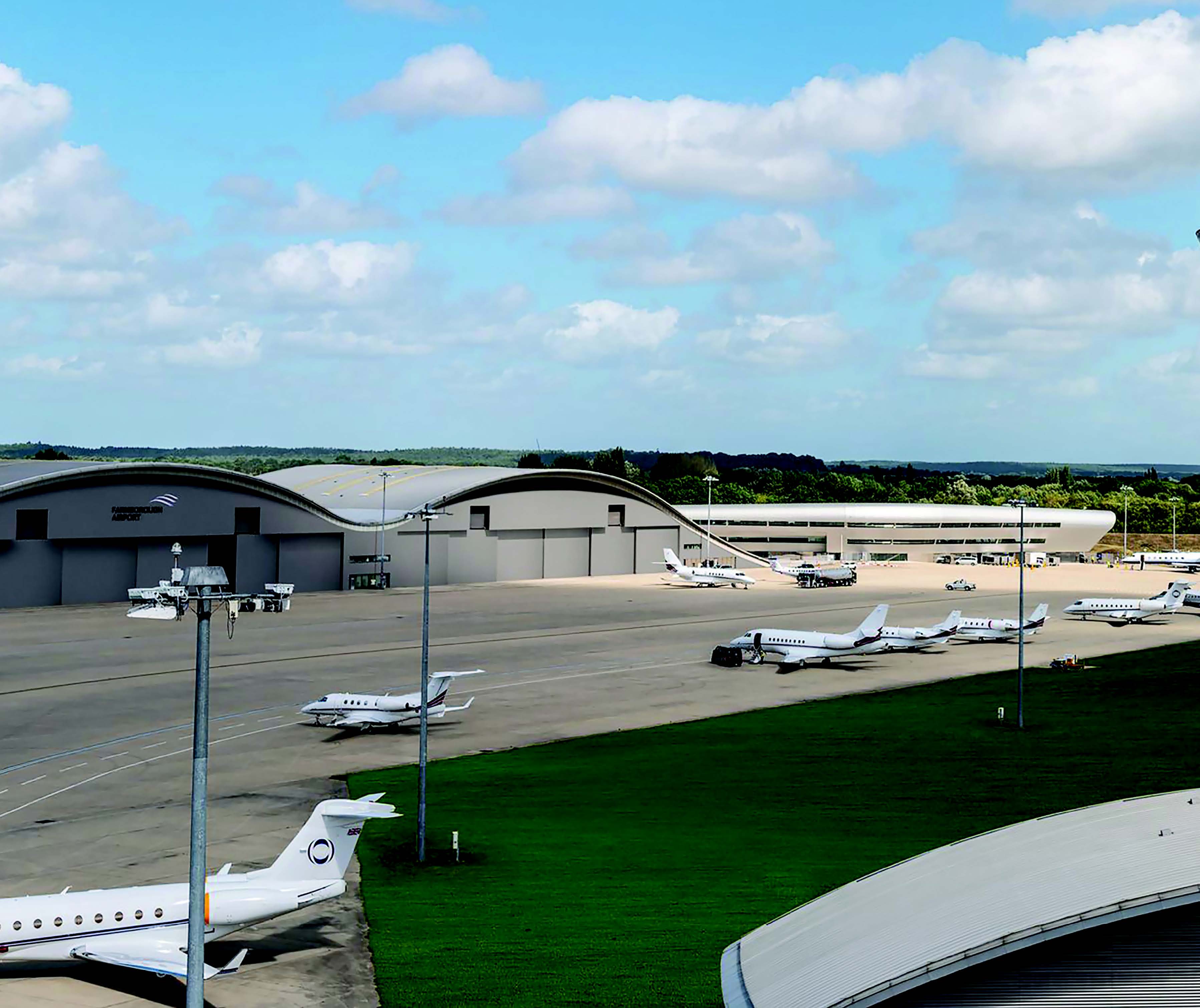
Contact Us
If you have any questions or comments please contact us using:
Email: Contact@FarnboroughAirport2040.com
Phone: 0808 164 6061
